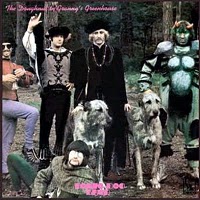 The great lost psychedelic album. On their second album the Bonzos knock off the trad jazz parodies and pair their surreal lyrics and wild imaginations with rock music to match. Neil Innes still gets to sing the catchiest songs — “Beautiful Zelda”, for instance, examines the perils of dating a space alien — but Vivian Stanshall beats him with what could be the band’s mission statement, “My Pink Half Of The Drainpipe”. Plus there’s the amazing Love parody “We Are Normal” (“and we dig Bert Weedon!”). The summit, though, is the too awesome for words “Rhinocratic Oaths”, which, with its cheery narration (“You should get out more, Percy, or you’ll start acting like a dog, ha ha … He was later arrested near a lamp-post”) reveals the Bonzo’s ultimate truth: that there is nothing so lunatic as what passes for everyday life. (Hey, that Dada/Doo-Dah wasn’t in their name for nothing.) If you have any spark of imagination or individuality, you must get this record. –Brad
The great lost psychedelic album. On their second album the Bonzos knock off the trad jazz parodies and pair their surreal lyrics and wild imaginations with rock music to match. Neil Innes still gets to sing the catchiest songs — “Beautiful Zelda”, for instance, examines the perils of dating a space alien — but Vivian Stanshall beats him with what could be the band’s mission statement, “My Pink Half Of The Drainpipe”. Plus there’s the amazing Love parody “We Are Normal” (“and we dig Bert Weedon!”). The summit, though, is the too awesome for words “Rhinocratic Oaths”, which, with its cheery narration (“You should get out more, Percy, or you’ll start acting like a dog, ha ha … He was later arrested near a lamp-post”) reveals the Bonzo’s ultimate truth: that there is nothing so lunatic as what passes for everyday life. (Hey, that Dada/Doo-Dah wasn’t in their name for nothing.) If you have any spark of imagination or individuality, you must get this record. –Brad
Jive Time Turntable
Royal Trux “Cats and Dogs” (1993)
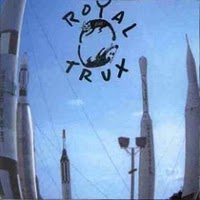 At a time when punk and indie were well into the mainstream, and everyone involved was flexing their love for all the classic rock heavies, little seemed to hit the target. Too much irony, too much 90’s production, no balance. It’s like punk was stuck in some kind of endless halloween. Royal Trux by all means should have blended right in; Stones worshiping hipster junkies playing dress up while kind of fumbling around with 70’s licks. Yet, somehow, they’re just so fucking cool that you cant deny their magnetic draw. Their vibe is smeared all over their sound and look and record covers in a way that makes up for EXTREME looseness at some points, by glorifying the superficial and criminal side of rock. “Cats and Dogs” is RTX at their peak of form, blending an avant-punk aesthetic with early 70’s rock grooves. The end result is a sort of 4-track collaged mess of vocals and guitars rolling all over the place like you’re listening to “Tonight’s the Night”, “White Light, White Heat”, and “Maggot Brain” at the same time. Shit is loose, man. Perfect for stoned chillin’ with the lights down. A great homage to rock history, check out this LP. –Alex
At a time when punk and indie were well into the mainstream, and everyone involved was flexing their love for all the classic rock heavies, little seemed to hit the target. Too much irony, too much 90’s production, no balance. It’s like punk was stuck in some kind of endless halloween. Royal Trux by all means should have blended right in; Stones worshiping hipster junkies playing dress up while kind of fumbling around with 70’s licks. Yet, somehow, they’re just so fucking cool that you cant deny their magnetic draw. Their vibe is smeared all over their sound and look and record covers in a way that makes up for EXTREME looseness at some points, by glorifying the superficial and criminal side of rock. “Cats and Dogs” is RTX at their peak of form, blending an avant-punk aesthetic with early 70’s rock grooves. The end result is a sort of 4-track collaged mess of vocals and guitars rolling all over the place like you’re listening to “Tonight’s the Night”, “White Light, White Heat”, and “Maggot Brain” at the same time. Shit is loose, man. Perfect for stoned chillin’ with the lights down. A great homage to rock history, check out this LP. –Alex
Magazine “Real Life” (1978)
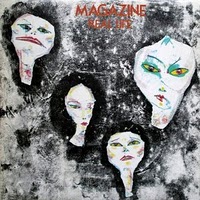 You can’t seem to pick up a music magazine nowadays without some interviewee citing Howard Devoto and Magazine as defining influences upon their own musical aspirations. Either that or some sycophantic retrospective which seems totally out of proportion for a band who were nothing more than a mote in the eye of music chronology. Amazingly, in this case, the hype is totally justified. Unhappy with the direction The Buzzcocks were taking and, possibly, recognising the limited shelf life of punk, Devoto formed Magazine and attempted to weave punk conviction into a more conventional and structured rock format. I’m convinced that longevity was no more guaranteed down this route, but it proved a panoramic trip whilst it lasted. The album is full of highlights and some quite astounding musical performances, particularly the bass and keyboards on the likes of “Definitive Gaze”. Messrs Adamson, McGeoch, Jackson and Formula deserve praise. Personally I have reservations about Devoto’s vocal style but as a discordant counterpoint to the music it works perfectly. “Shot By Both Sides” is spiky rock at its best and “The Light Pours Out Of Me” remains in my personal top twenty to this day. Magazine paved the path for post punk, pity they couldn’t walk the road for longer themselves. –Ian
You can’t seem to pick up a music magazine nowadays without some interviewee citing Howard Devoto and Magazine as defining influences upon their own musical aspirations. Either that or some sycophantic retrospective which seems totally out of proportion for a band who were nothing more than a mote in the eye of music chronology. Amazingly, in this case, the hype is totally justified. Unhappy with the direction The Buzzcocks were taking and, possibly, recognising the limited shelf life of punk, Devoto formed Magazine and attempted to weave punk conviction into a more conventional and structured rock format. I’m convinced that longevity was no more guaranteed down this route, but it proved a panoramic trip whilst it lasted. The album is full of highlights and some quite astounding musical performances, particularly the bass and keyboards on the likes of “Definitive Gaze”. Messrs Adamson, McGeoch, Jackson and Formula deserve praise. Personally I have reservations about Devoto’s vocal style but as a discordant counterpoint to the music it works perfectly. “Shot By Both Sides” is spiky rock at its best and “The Light Pours Out Of Me” remains in my personal top twenty to this day. Magazine paved the path for post punk, pity they couldn’t walk the road for longer themselves. –Ian
J.J. Cale “Troubadour” (1976)
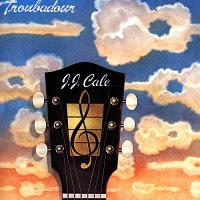 J.J. Cale’s fourth album Troubadour is a mixed stew of everything from country, jazz, arena rock, blues, folk to funk; and that’s just in the first song. He manages to whisper like Nick Drake, growl like John Lee Hooker and wine like Dylan…did I mention he’s an extremely adept guitar player as well? Cale’s songs have been covered by many artists, the most famous being “Cocaine” by Eric Clapton, but here we have the original; stripped down, but somehow fuller, with funky jabs and clumsy power chords. There’s also some simple love songs as well, “Hey Baby” never gets too corny with jazzy horn phrases intertwining with country style chicken-pickin.’ “Travelin’ Light” is an intense study of the driving song with guitars and vibes throughout, pulsing like highway lines in the corner of your eye. This record is about the groove, while brilliant arrangements and clever instrumentation provide the texture, making everything unclassifiable. –ECM Tim
J.J. Cale’s fourth album Troubadour is a mixed stew of everything from country, jazz, arena rock, blues, folk to funk; and that’s just in the first song. He manages to whisper like Nick Drake, growl like John Lee Hooker and wine like Dylan…did I mention he’s an extremely adept guitar player as well? Cale’s songs have been covered by many artists, the most famous being “Cocaine” by Eric Clapton, but here we have the original; stripped down, but somehow fuller, with funky jabs and clumsy power chords. There’s also some simple love songs as well, “Hey Baby” never gets too corny with jazzy horn phrases intertwining with country style chicken-pickin.’ “Travelin’ Light” is an intense study of the driving song with guitars and vibes throughout, pulsing like highway lines in the corner of your eye. This record is about the groove, while brilliant arrangements and clever instrumentation provide the texture, making everything unclassifiable. –ECM Tim
The Zombies “Odessey and Oracle” (1968)
 If elegantly arranged chamber pop going for baroque is your cup of tea, get out your best china. Just about every minute of this record is beautifully constructed and rich in mood, and the arrangements are continuously compelling: comparisons with other groups don’t suffice, because this is a record on its own terms. The Zombies were kind of a musician’s group; all very good players writing very conscientiously for accessibility and sophistication (rather like those Beatles blokes, but I wasn’t gonna compare). Even if this disc falls off a bit on the second half, which isn’t wall-to-wall classic, the vocal harmonies and the variety of musical textures these guys manage to wring out of every chord should satisfy, even when the song isn’t quite spot-on. But jeepers, when they’re on, they are really on. One of the high water marks of ’60s pop. –Will
If elegantly arranged chamber pop going for baroque is your cup of tea, get out your best china. Just about every minute of this record is beautifully constructed and rich in mood, and the arrangements are continuously compelling: comparisons with other groups don’t suffice, because this is a record on its own terms. The Zombies were kind of a musician’s group; all very good players writing very conscientiously for accessibility and sophistication (rather like those Beatles blokes, but I wasn’t gonna compare). Even if this disc falls off a bit on the second half, which isn’t wall-to-wall classic, the vocal harmonies and the variety of musical textures these guys manage to wring out of every chord should satisfy, even when the song isn’t quite spot-on. But jeepers, when they’re on, they are really on. One of the high water marks of ’60s pop. –Will
Les McCann “Layers” (1974)
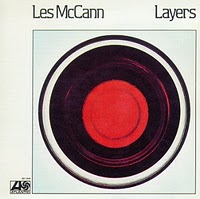 Think of the work of the following artists in the early seventies: Tonto’s Expanding Head Band, The Mizell Brothers, Lonnie Liston Smith, Stevie Wonder, George Duke, Herbie Hancock, Miles Davis. If you like their work, you’ll like – love – this album. Aside from an electric bass and three percussionists, this is the epitome of a keyboard album. By overdubbing (this was the first album recorded in 32-track format), McCann employs ARP synths, clavinet, Fender-Rhodes e-piano, and piano to simulate horns, woodwinds, and whatnot. On the basis of funky grooves, he creates a reflective atmosphere that’s both nostalgic and futuristic. The album is structured like a suite, with the tunes fading into each other. The result is something that could be called Prog-Jazz. McCann created a visionary sound when he recorded this album in ’72. Layers is a groundbreaking Fusion album from the early seventies when fusion was not yet something to be ashamed of. The record belongs to the best of that genre. –Yofriend
Think of the work of the following artists in the early seventies: Tonto’s Expanding Head Band, The Mizell Brothers, Lonnie Liston Smith, Stevie Wonder, George Duke, Herbie Hancock, Miles Davis. If you like their work, you’ll like – love – this album. Aside from an electric bass and three percussionists, this is the epitome of a keyboard album. By overdubbing (this was the first album recorded in 32-track format), McCann employs ARP synths, clavinet, Fender-Rhodes e-piano, and piano to simulate horns, woodwinds, and whatnot. On the basis of funky grooves, he creates a reflective atmosphere that’s both nostalgic and futuristic. The album is structured like a suite, with the tunes fading into each other. The result is something that could be called Prog-Jazz. McCann created a visionary sound when he recorded this album in ’72. Layers is a groundbreaking Fusion album from the early seventies when fusion was not yet something to be ashamed of. The record belongs to the best of that genre. –Yofriend
Rush “2112” (1976)
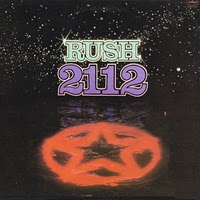 Rush’s first truly definitive release, 2112 kickstarts a run that would vault the power trio to the top of the heap among Canada’s rock exports. Sporting an iconic sleeve and crystal- production values, the album has come to define Rush’s early sound, featuring traditional hard rock retooled with progressive precision, while lyricist Neil Peart’s mix of philosophy and fantasy would ignite the sci-fi dreams of pimply-faced rockers for years to come. The epic title suite covers the whole of side one, and credits it’s dystopian storyline to author Ayn Rand’s Anthem, whose individualist outlook would fuel the lyrical fire of many a Rush classic. The track tells it’s Saturday afternoon story of futuristic rebellion with an interwoven set of songs ranging from the complex “Overture” section and barnstorming “Temples of Syrinx,” through the delicate “Discovery,” tortured “Soliloquy” and tear-down-the-walls “Grand Finale.” The remainder of 2112 in no way pales in comparison to it’s flip side, boasting the fan favorite wacky-tabaccy ode “A Passage to Bangkok,” supernatural imagery of “The Twilight Zone,” and self-reliant rocker “Something For Nothing.” As the critics looked on in dumbfounded disbelief, the sounds of 2112 filled the bedrooms and basements of suburban exiles worldwide, who from then on would live in anticipation of the next time they could lay their comic book ink-stained fingers on a new Rush album. –Ben
Rush’s first truly definitive release, 2112 kickstarts a run that would vault the power trio to the top of the heap among Canada’s rock exports. Sporting an iconic sleeve and crystal- production values, the album has come to define Rush’s early sound, featuring traditional hard rock retooled with progressive precision, while lyricist Neil Peart’s mix of philosophy and fantasy would ignite the sci-fi dreams of pimply-faced rockers for years to come. The epic title suite covers the whole of side one, and credits it’s dystopian storyline to author Ayn Rand’s Anthem, whose individualist outlook would fuel the lyrical fire of many a Rush classic. The track tells it’s Saturday afternoon story of futuristic rebellion with an interwoven set of songs ranging from the complex “Overture” section and barnstorming “Temples of Syrinx,” through the delicate “Discovery,” tortured “Soliloquy” and tear-down-the-walls “Grand Finale.” The remainder of 2112 in no way pales in comparison to it’s flip side, boasting the fan favorite wacky-tabaccy ode “A Passage to Bangkok,” supernatural imagery of “The Twilight Zone,” and self-reliant rocker “Something For Nothing.” As the critics looked on in dumbfounded disbelief, the sounds of 2112 filled the bedrooms and basements of suburban exiles worldwide, who from then on would live in anticipation of the next time they could lay their comic book ink-stained fingers on a new Rush album. –Ben
Buy Jive Time Merchandise Online!

 Buy Jive Time T-shirts, posters, record cleaner, and more, including some online exclusives! Visit the store.
Buy Jive Time T-shirts, posters, record cleaner, and more, including some online exclusives! Visit the store.
Randy Newman “Little Criminals” (1977)
 The more I listen to Randy Newman, the more I’m impressed. It’s not his voice, even though his nasally vocal has a pleasant, relaxing quality. It’s certainly not the music which on Little Criminals is particularly one paced with a soporific, dozy aspect. It’s not even the lyrics. They can be incisive, biting and sardonic but they also are simple and endearing with a homey feel. No, it’s none of that. What it is, is the subjects he choses to write about and the subtle twists he puts into the stories. Take the title track as a prime example. Start listening to “Little Criminals” and you have this picture of indigant locals determined to rid their town of a small-time drug dealer. But, as the song progresses, you suddenly realise his protagonists are themselves criminals worried about a newcomer taking away their business – or, even better, lowering the tone of the neighbourhood because they’re into armed robbery and consider that a higher calling than drug dealing. Brilliant! Or how about “Rider In The Rain” which subverts the myth of the lone cowboy wandering the plains by reminding us of the wife he’s abandoned and the fact he’s “raped and pillaged” his way to the place he is now. Or “In Germany Before The War” which conjures up a picture of a old guy shutting up his store every day to wander down to the banks of the Rhine to gaze out over the river. Only this guy is (I think) Peter Kurten, a real-life serial killer, preying on defenceless children. And all that’s without mentioning Newman’s dig at psychiatry in “Sigmund Freud’s Impersonation Of Albert Einstein In America” or how appearances can be deceptive with “Jolly Coppers On Parade”. And another example of how satire can backfire in “Small People” which a great many people took offence to because they believed Newman was deadly serious. Although, thinking about it, I suppose it wasn’t technically a backfire as the song became a massive hit! As you would expect there are a couple of tender love songs – “Kathleen (Catholicism Made Easy)” and “I’ll Be Home”. Plus the song “Baltimore” is particularly affecting as I visited the city very recently. I think there must have been a great deal of urban regeneration since that song was written because Newman’s Baltimore is a far bleaker and darker place than I saw. I don’t think Newman will ever release a classic album because of the way he writes. The uncertainty of the does he mean it? is he joking? is unsettling and uncomfortable and makes it impossible to like everything. But I’m equally convinced that, after hearing just two of his albums, there will always be something for me to enjoy on all his others. –Ian
The more I listen to Randy Newman, the more I’m impressed. It’s not his voice, even though his nasally vocal has a pleasant, relaxing quality. It’s certainly not the music which on Little Criminals is particularly one paced with a soporific, dozy aspect. It’s not even the lyrics. They can be incisive, biting and sardonic but they also are simple and endearing with a homey feel. No, it’s none of that. What it is, is the subjects he choses to write about and the subtle twists he puts into the stories. Take the title track as a prime example. Start listening to “Little Criminals” and you have this picture of indigant locals determined to rid their town of a small-time drug dealer. But, as the song progresses, you suddenly realise his protagonists are themselves criminals worried about a newcomer taking away their business – or, even better, lowering the tone of the neighbourhood because they’re into armed robbery and consider that a higher calling than drug dealing. Brilliant! Or how about “Rider In The Rain” which subverts the myth of the lone cowboy wandering the plains by reminding us of the wife he’s abandoned and the fact he’s “raped and pillaged” his way to the place he is now. Or “In Germany Before The War” which conjures up a picture of a old guy shutting up his store every day to wander down to the banks of the Rhine to gaze out over the river. Only this guy is (I think) Peter Kurten, a real-life serial killer, preying on defenceless children. And all that’s without mentioning Newman’s dig at psychiatry in “Sigmund Freud’s Impersonation Of Albert Einstein In America” or how appearances can be deceptive with “Jolly Coppers On Parade”. And another example of how satire can backfire in “Small People” which a great many people took offence to because they believed Newman was deadly serious. Although, thinking about it, I suppose it wasn’t technically a backfire as the song became a massive hit! As you would expect there are a couple of tender love songs – “Kathleen (Catholicism Made Easy)” and “I’ll Be Home”. Plus the song “Baltimore” is particularly affecting as I visited the city very recently. I think there must have been a great deal of urban regeneration since that song was written because Newman’s Baltimore is a far bleaker and darker place than I saw. I don’t think Newman will ever release a classic album because of the way he writes. The uncertainty of the does he mean it? is he joking? is unsettling and uncomfortable and makes it impossible to like everything. But I’m equally convinced that, after hearing just two of his albums, there will always be something for me to enjoy on all his others. –Ian
Charlie Parker & Dizzy Gillespie “Bird and Diz”
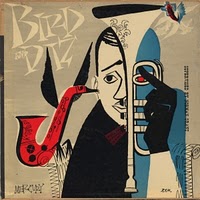 This is hardly a typical recording, but I have to say that this is my favorite jazz album ever recorded. It’s the only recording to have Thelonious Monk playing together with Charlie Parker and Dizzy Gillespie, which in itself is pretty amazing. Although their styles are so distinct, they do play quite well together. Hearing them playing together is almost surreal. It’s hard for me to describe how and why I like this album. I think the main reason that I like it is that it’s so strange and so normal at the same time. The tunes exemplify this…two catchy blues (Bloomdido and Mohawk), a laid-back song to the same chord changes as “Stompin at the Savoy” (Relaxin’ with Lee), a slowish and rather bizarre rhythm-changes tune (An Oscar for Treadwell), leap frog which is just ridiculously fast, and rather cheerful…and then…my melancholy baby. And of course…bizarre stuff happens to the harmonies and rhythms when you put these musicians together. One moment it sounds so old-fashioned, the next moment totally modern. I love it all the way! –Alex
This is hardly a typical recording, but I have to say that this is my favorite jazz album ever recorded. It’s the only recording to have Thelonious Monk playing together with Charlie Parker and Dizzy Gillespie, which in itself is pretty amazing. Although their styles are so distinct, they do play quite well together. Hearing them playing together is almost surreal. It’s hard for me to describe how and why I like this album. I think the main reason that I like it is that it’s so strange and so normal at the same time. The tunes exemplify this…two catchy blues (Bloomdido and Mohawk), a laid-back song to the same chord changes as “Stompin at the Savoy” (Relaxin’ with Lee), a slowish and rather bizarre rhythm-changes tune (An Oscar for Treadwell), leap frog which is just ridiculously fast, and rather cheerful…and then…my melancholy baby. And of course…bizarre stuff happens to the harmonies and rhythms when you put these musicians together. One moment it sounds so old-fashioned, the next moment totally modern. I love it all the way! –Alex
Circle Jerks “Group Sex” (1980)
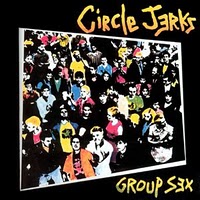 When Keith Morris left seminal Californian Punksters Black Flag, it was obvious he needed something even more shocking, for pushing the boundaries of music and taste was it seems his ambition. So in 1979 he formed Circle Jerks with Greg Hetson (Guitar), Roger Rogerson (Bass), and Lucky Lehrer (Drums). A reputation for the most wild local shows and enormous amounts of alcohol intake onstage and off started the folklore legend which attracted the disaffected SoCal Skater punks. The debut “Group Sex” is amazing by its brevity, with 14 songs spanning just under 16 minutes. It’s typical early American Punk thrash, razor sharp lyrics, tinny production and songs covering Politics, middle class Hollywood malaise, drugs, and of course sex… What seems unusual for the time and the sentiment, is that Hetson is a strong Guitarist and musically the band seems tight which in turn raises the quality above many of the bands of the period. The highlights include “I Just Want Some Skank”, “Beverly Hills” and “World Up My Ass”.That same year, the group was one of several California punk bands to be immortalized in the Penelope Spheeris documentary “The Decline of Western Civilization”, and live versions of four songs from “Group Sex” appear on the movie’s soundtrack album. “Group Sex” is a rabid pulsing slice of aggression liberally smattered with gruff and gritty lyrics from Morris. Though not essential, it’s a useful snapshot of American Punk circa 1980. –Ben
When Keith Morris left seminal Californian Punksters Black Flag, it was obvious he needed something even more shocking, for pushing the boundaries of music and taste was it seems his ambition. So in 1979 he formed Circle Jerks with Greg Hetson (Guitar), Roger Rogerson (Bass), and Lucky Lehrer (Drums). A reputation for the most wild local shows and enormous amounts of alcohol intake onstage and off started the folklore legend which attracted the disaffected SoCal Skater punks. The debut “Group Sex” is amazing by its brevity, with 14 songs spanning just under 16 minutes. It’s typical early American Punk thrash, razor sharp lyrics, tinny production and songs covering Politics, middle class Hollywood malaise, drugs, and of course sex… What seems unusual for the time and the sentiment, is that Hetson is a strong Guitarist and musically the band seems tight which in turn raises the quality above many of the bands of the period. The highlights include “I Just Want Some Skank”, “Beverly Hills” and “World Up My Ass”.That same year, the group was one of several California punk bands to be immortalized in the Penelope Spheeris documentary “The Decline of Western Civilization”, and live versions of four songs from “Group Sex” appear on the movie’s soundtrack album. “Group Sex” is a rabid pulsing slice of aggression liberally smattered with gruff and gritty lyrics from Morris. Though not essential, it’s a useful snapshot of American Punk circa 1980. –Ben
Rudimentary Peni "Death Church" (1983)
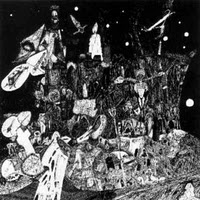 Pick up any Rudimentary Peni album an stare at it’s wild cover art for awhile. This is what it will most likely sound like; total no-pose insanity, and in a very dark shade. This is all a product of Nick Blinko (aka Rudimentary Peni) who’s demented art and mind grace every square inch of every Peni release. 1983’s “Death Church” is probably the most accessable album, but in no way comprimises to sanity. Subtle mind altering sonic tone rolls off what would otherwise be generic, mid-tempo, three chord death rock cuts. While their earlier work had more of a harsh UK hardcore edge, and later they went absolutely bonkers making LSD trip style punk sound collages, Death Church keeps a cool 4/4 pace through the whole record that makes it sound like some sort of meaty saturday night car cruising music that goths can get down to, which is nuts enough in itself but then it’s also super Brittish sounding? I dont know, man. What can I say, the guy’s crazy. And you are too if you don’t give this raging slab a listen. –Alex
Pick up any Rudimentary Peni album an stare at it’s wild cover art for awhile. This is what it will most likely sound like; total no-pose insanity, and in a very dark shade. This is all a product of Nick Blinko (aka Rudimentary Peni) who’s demented art and mind grace every square inch of every Peni release. 1983’s “Death Church” is probably the most accessable album, but in no way comprimises to sanity. Subtle mind altering sonic tone rolls off what would otherwise be generic, mid-tempo, three chord death rock cuts. While their earlier work had more of a harsh UK hardcore edge, and later they went absolutely bonkers making LSD trip style punk sound collages, Death Church keeps a cool 4/4 pace through the whole record that makes it sound like some sort of meaty saturday night car cruising music that goths can get down to, which is nuts enough in itself but then it’s also super Brittish sounding? I dont know, man. What can I say, the guy’s crazy. And you are too if you don’t give this raging slab a listen. –Alex


